DeStalk Project
General description
The awareness-raising course in the field of information security, Cyber Violence and Stalkerware Online Course, is developed based on the Kaspersky Automated Security Awareness Platform (K-ASAP) as part of the DeStalk program. The DeStalk program is an international project aimed at reducing gender-based cyber violence, particularly against women. Obsessive behavior and the use of spyware are increasingly widespread; sexual harassment, bullying, cyberstalking, and other forms of cyber violence against women and girls not only go unpunished but often go undetected. The DeStalk project raises awareness about these forms of violence and calls on government authorities and public organizations to actively combat cybercriminals.
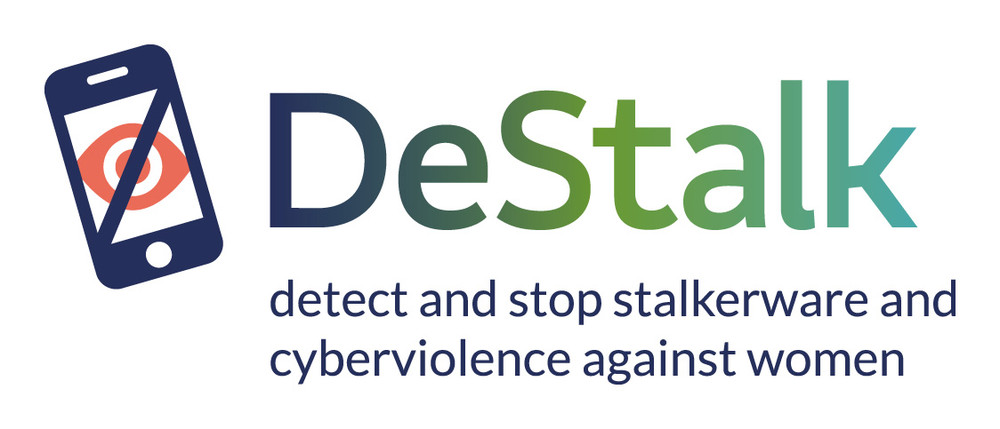
The Cyber Violence and Stalkerware Online Course is an educational course consisting of a main topic “Cyber Violence and Spyware,” as well as three additional courses on the principles of working with victims of violence, cyber aggressors, and representatives of public organizations specializing in this area.
The base language of the platform is English, and in addition, it has been translated into French, Spanish, German, and Italian. During the localization of the platform, the cultural specifics of each region are taken into account (this implies not a literal translation, but an adaptation of the content, including text and illustrations).
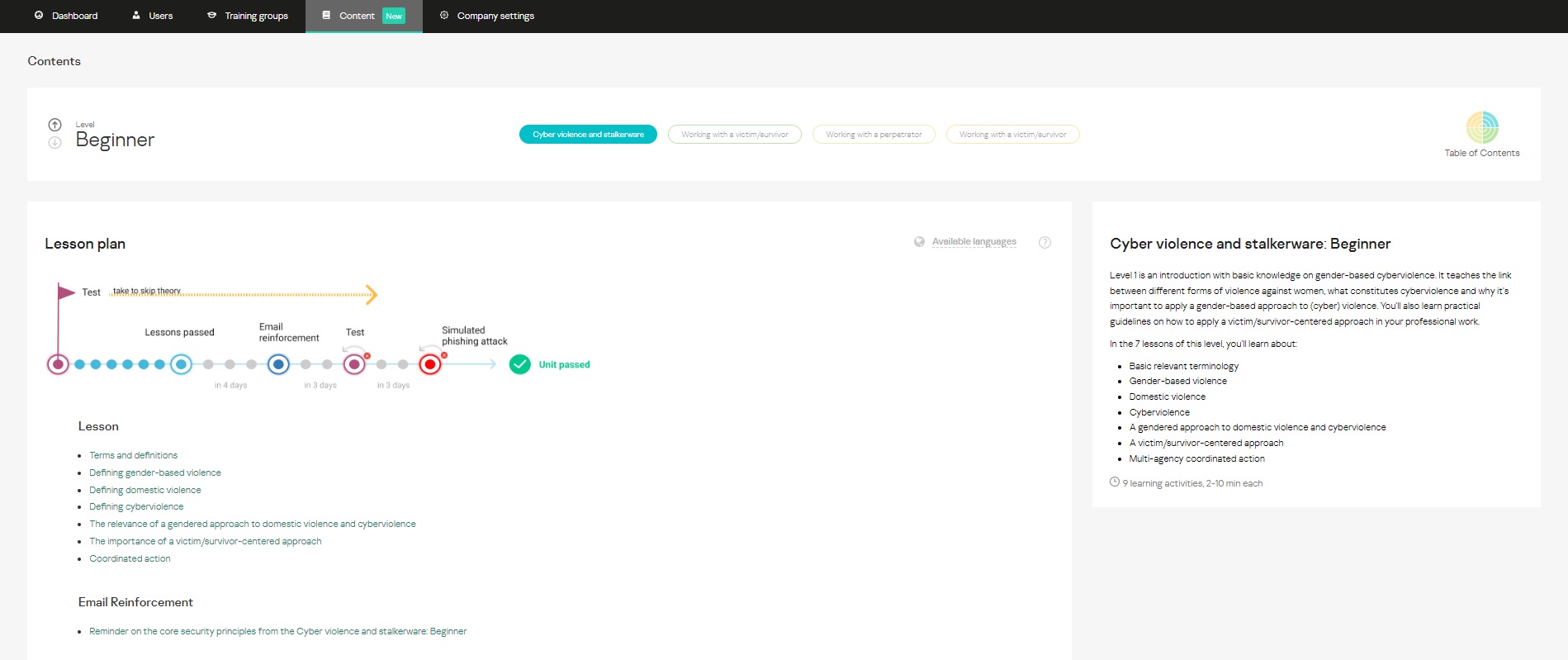
The main course consists of 20 lessons, divided into four levels of difficulty. Each lesson is dedicated to a subtopic and consists of a set of interactive slides (informational, review, and so on). Each additional course consists of one lesson.
In addition to the lessons, the platform includes final tests that the user must pass upon completing each level, as well as a series of informational emails. The total volume of material presented in the DeStalk Project amounts to approximately 30,000 words.
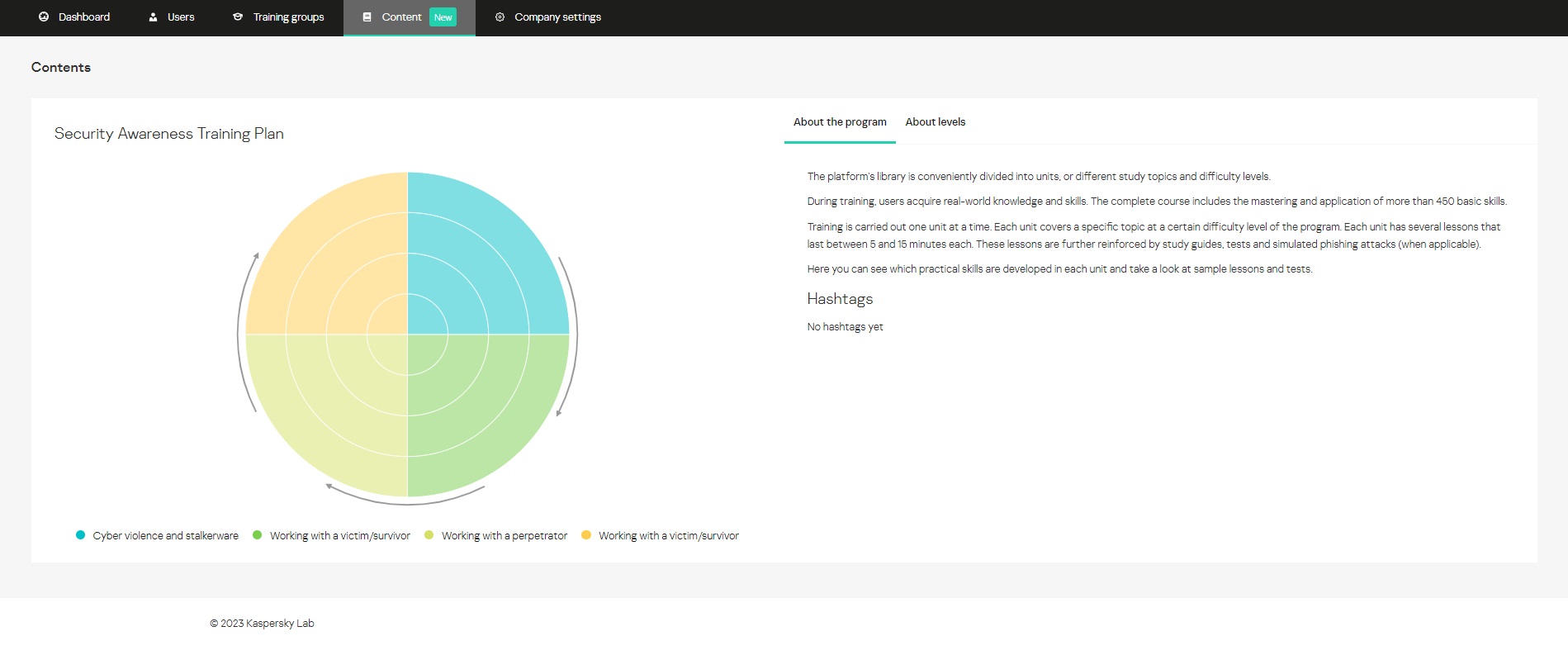
My Role in the Development of DeStalk
Template Creation and Mentorship
The platform’s content was developed by my colleague, Kaspersky specialist Christina Jankowski. As the head of the content group for the Kaspersky ASAP platform, I carried out preliminary work that allowed Christina to create content perfectly suited for the platform’s format:
- I conducted a detailed briefing on the principles of material construction in K-ASAP
- I created templates for comfortable work on the content
- Throughout the content development process, I answered questions and assisted with materials
- I managed the integration and localization of the materials
Educational Materials
Each lesson on the platform consists of 10–20 slides of various types: welcome slides, educational slides, question slides, conclusion slides, and so on.
Example of an initial lesson slide:
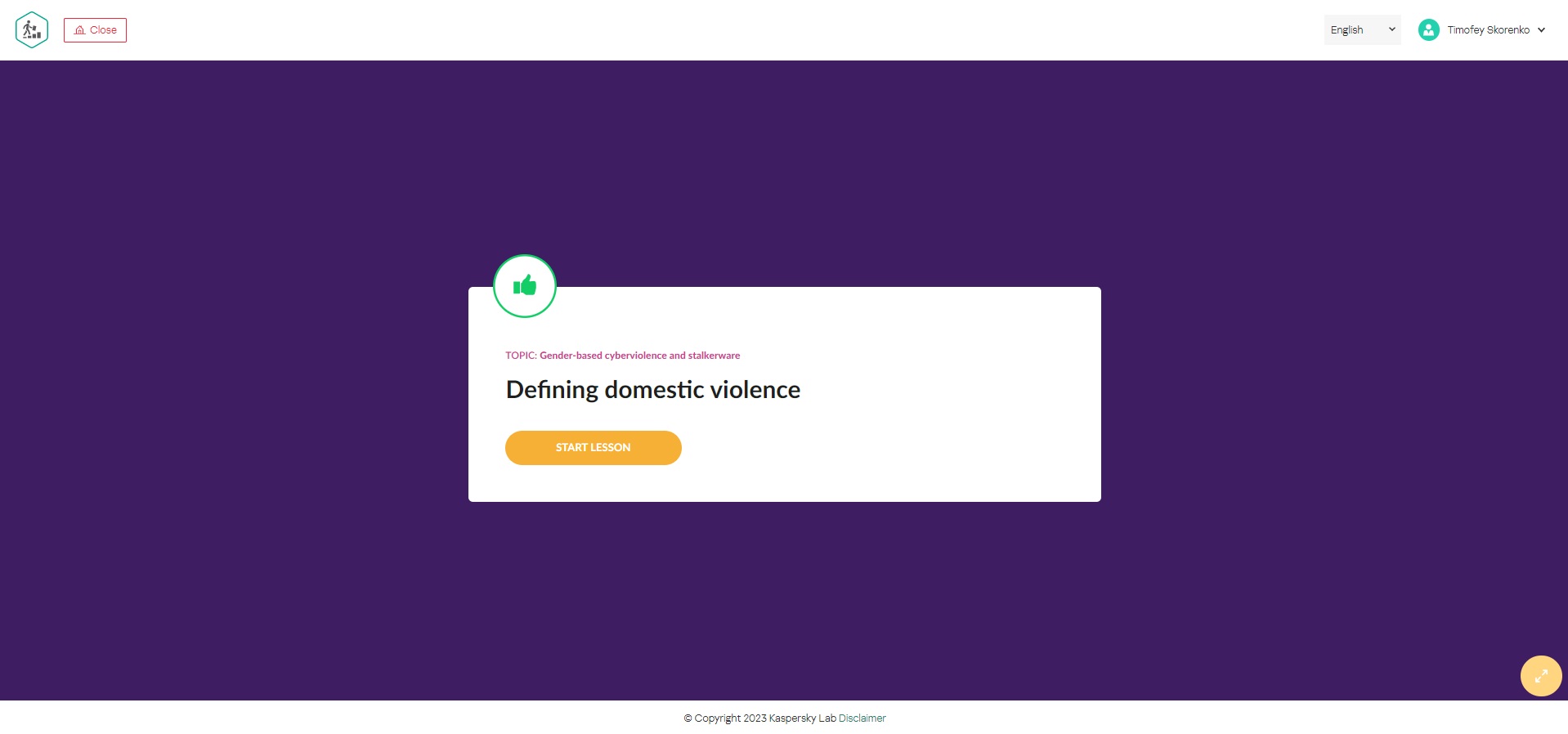
Examples of educational slides:
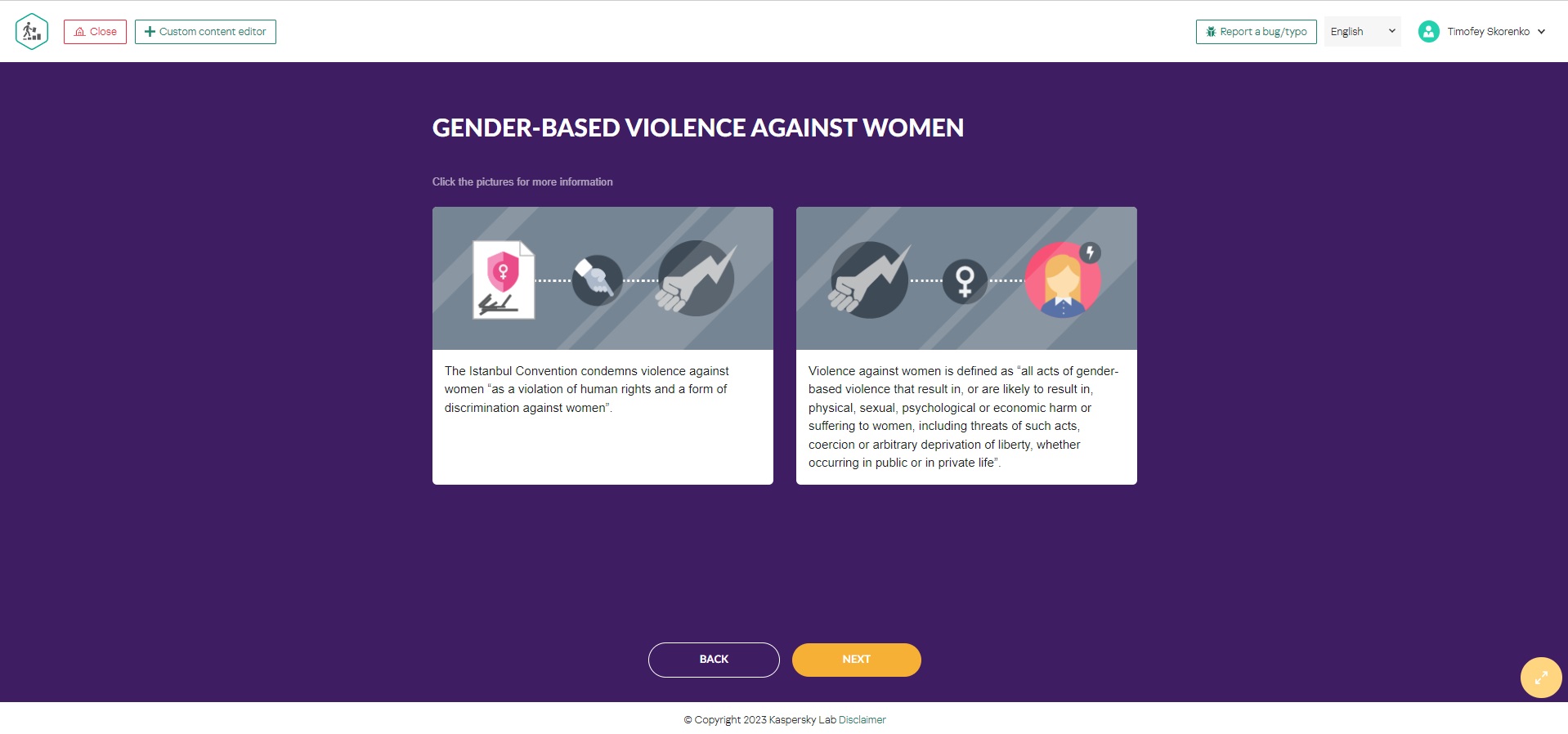
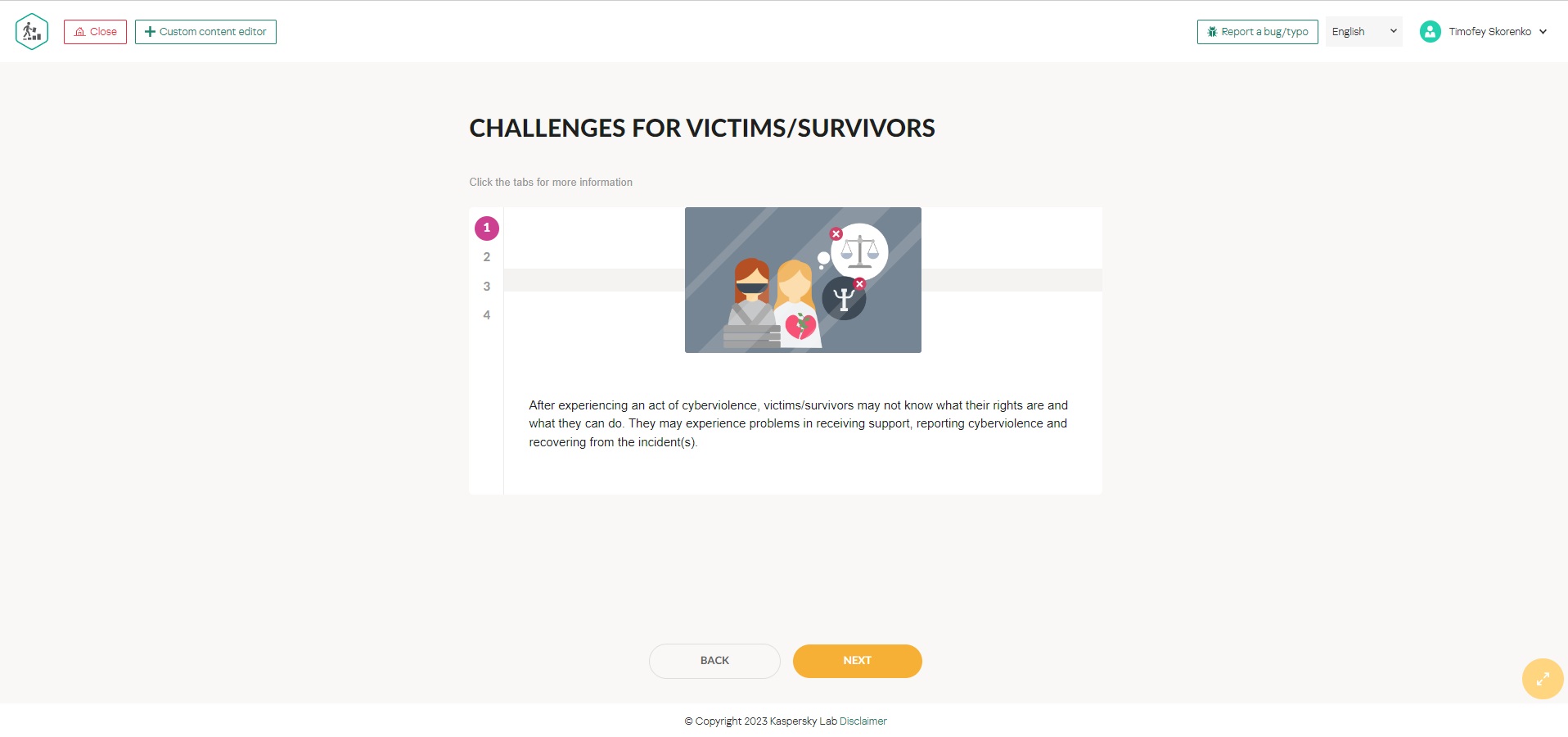
Example of a slide with an educational question:
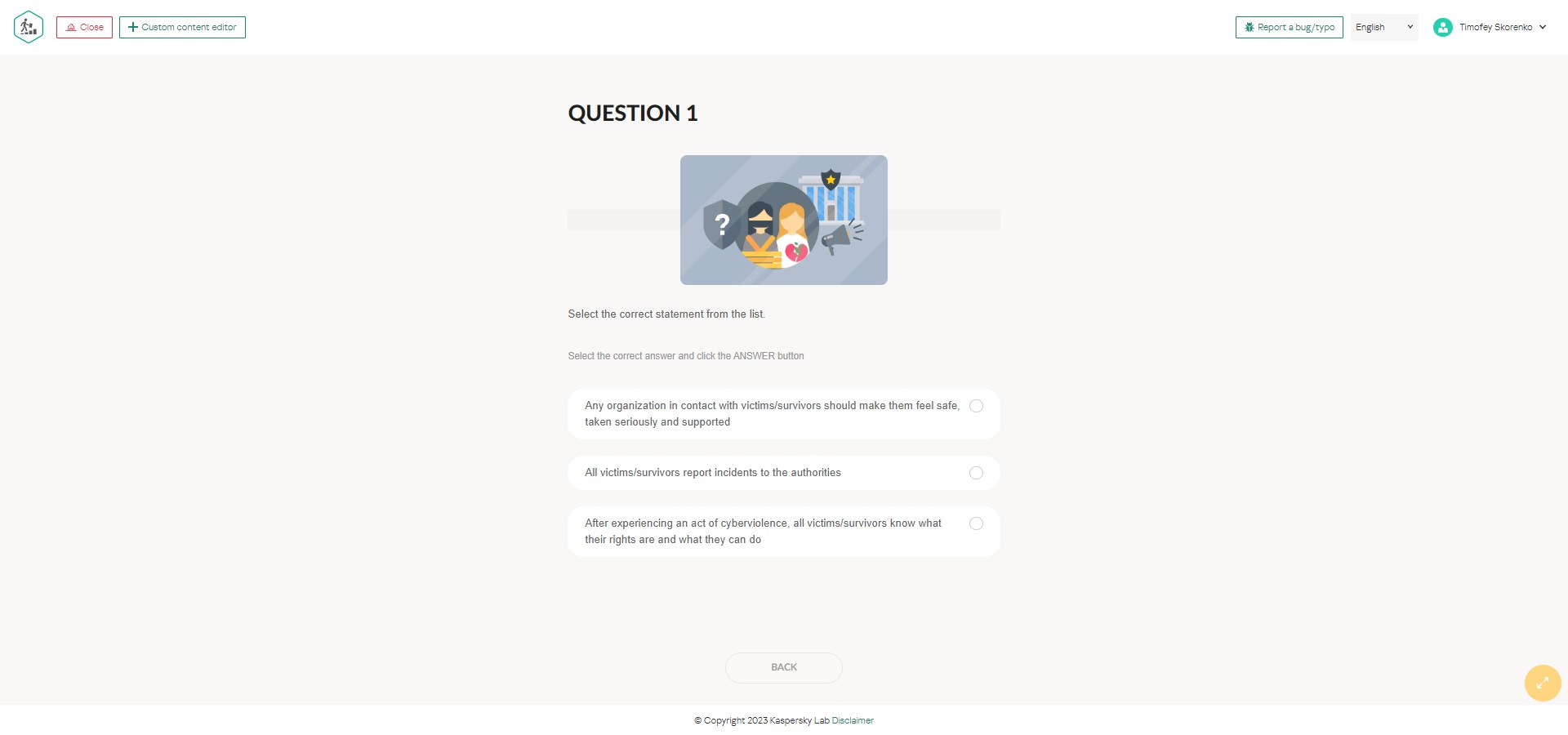
To confirm their competence at the end of each level, the learner must pass a test consisting of 10–15 questions. After completing a level, the learner receives an email summary containing a brief overview of the information learned during the course. In addition, the system has a series of interface emails for both training managers and learners: welcome email, email about training completion, email with training statistics, certificate email on completing the topic, and so on.